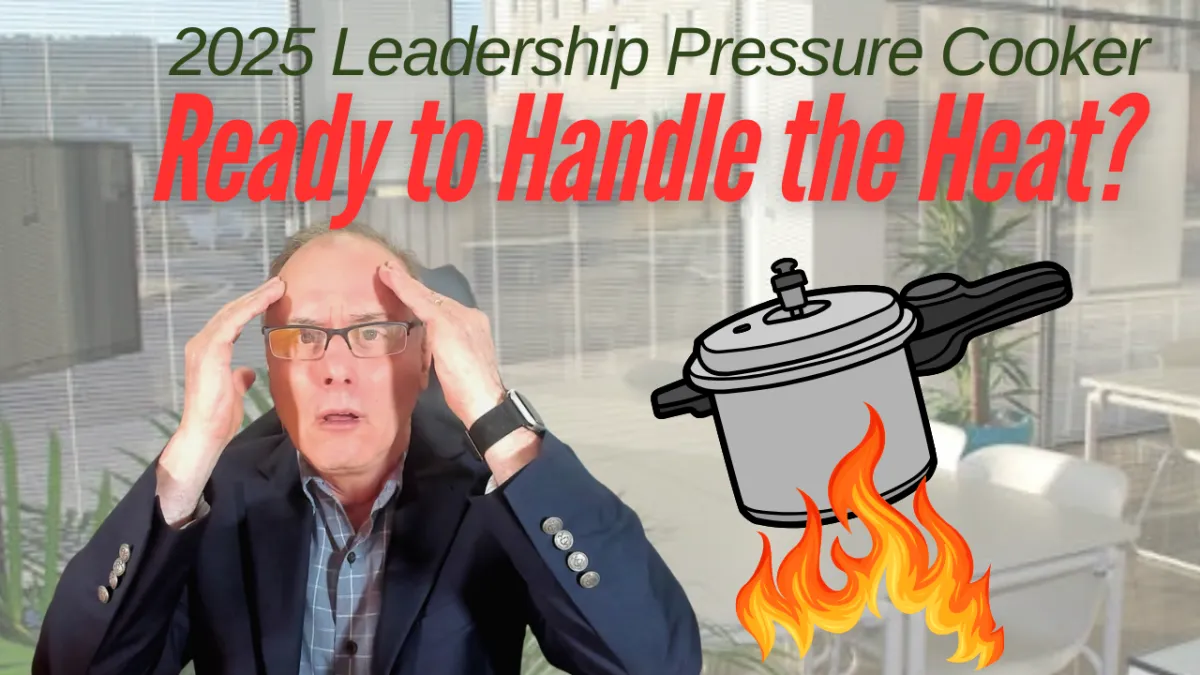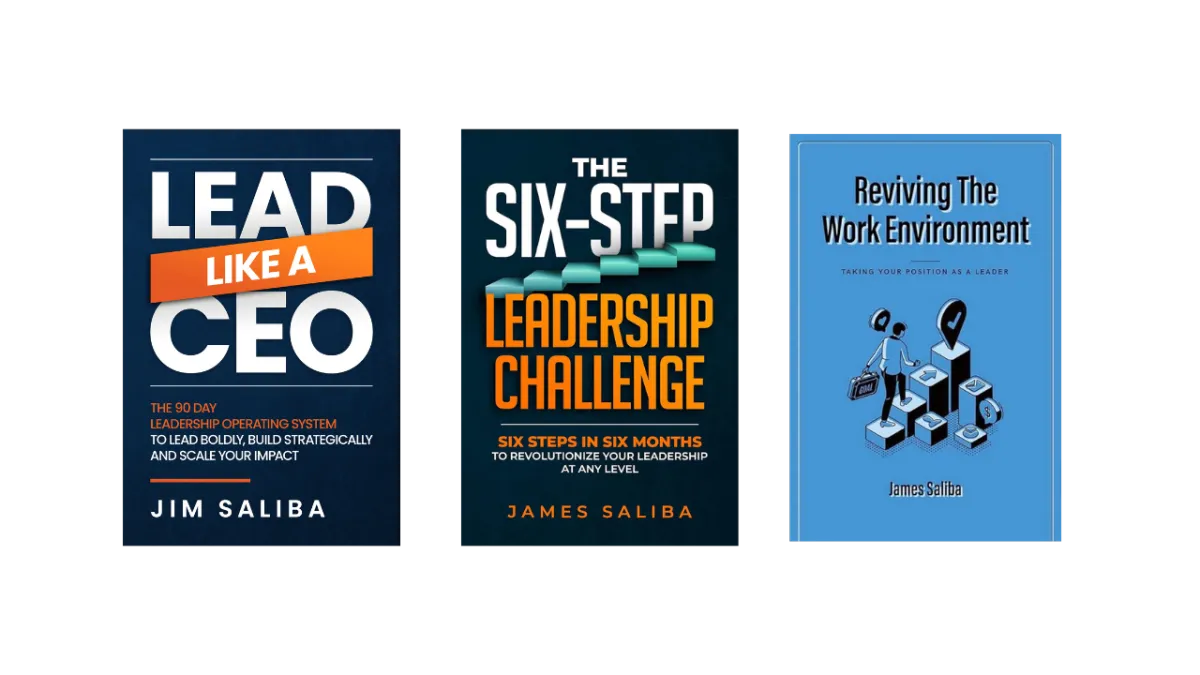Insights for Real-World Leadership
Straight talk and proven strategies for leaders who are done babysitting and ready to lead at the next level.

Why 2025 Will Redefine Leadership as We Know It
Leadership in 2025 isn’t just tough—it’s like trying to juggle flaming swords while riding a unicycle on a tightrope. But before we dive into today’s chaos, let’s rewind to 2019, back when leadership challenges seemed, dare I say it, manageable.
Back then, the biggest headaches for leaders included:
Employee Engagement: “Why can’t people just be motivated? We even added cold brew on tap!”
Attracting Talent: “How do we convince millennials we’re the cool kids?”
Retention: “They left after two years? That’s basically a lifetime, right?”
Digital Transformation: “Should we be on Instagram? And what even is TikTok?”
Sure, those were real challenges—but compared to what we’re dealing with now? It feels like preschool for leaders. A simpler time when debates were about open office layouts and whether anyone ever really uses those beanbag chairs.
And then came 2020, and the leadership world turned upside down.
How We Got Here: A Timeline of Pressures
2019: The Calm Before the Storm
Leaders worried about engagement, talent, and staying relevant in a tech-driven world.
Buying habits were predictable: consumers and businesses bought what they needed, when they needed it.
Ah, the good ol’ days of normalcy.
2020: COVID-19 Changes Everything
Overnight, companies went remote. “Wi-Fi? Ergonomic chairs? Just figure it out, Karen!”
Layoffs swept across industries as businesses prioritized survival.
“Engagement” became about ensuring employees were emotionally stable enough to work from home.
Buying habits shifted dramatically: businesses delayed purchases, and consumers flocked to online shopping.
2021: The Hiring Frenzy and New Realities
The great rehiring began, as companies overexpanded, convinced the post-pandemic boom would last forever.
Leaders had to onboard at record speeds, even if it felt like drinking from a firehose.
“Wow, I can hire from anywhere!” Remote work widened the talent pool but introduced challenges like managing teams you’d never met in person.
Buying habits continued to ripple: businesses cut non-essential spending, and consumers became more selective and less loyal to brands.
2022: Inflation and the First Cracks
Inflation hit hard, interest rates soared, and borrowing became expensive.
Leaders juggled rising costs and mounting pressure to avoid layoffs. “Do we really need the holiday party this year?”
Buying habits further evolved: businesses scrutinized every expense, and consumers demanded faster, cheaper, and better—all at once.
2023: Layoffs, Again, and the Ripple Effect
Tech and other industries realized they had overhired and swung back to layoffs.
Leaders were left managing burnout, “survivor syndrome,” and team morale in tatters.
Buying behaviors turned cautious—businesses delayed investments, and consumers shifted to necessities over splurges.
Private equity (PE) and venture capital (VC) firms faced stalled exits, creating immense pressure on portfolio company leaders to deliver results with fewer resources.
2024: Hybrid Fatigue and the Empathy Gap
Hybrid work fatigue set in, leaving leaders to navigate transactional relationships and dwindling team culture.
Employees demanded more empathy, purpose, and engagement, but leaders struggled to balance these needs with operational demands.
PE and VC pressures reached new highs, with leaders told to “scale or fail” despite constrained timelines and budgets.
Buying behaviors became increasingly selective, with consumers and businesses demanding both affordability and social responsibility.
2025: The Leadership Pressure Cooker
Everything—hybrid dysfunction, economic uncertainty, stalled exits, AI disruption—has compounded into a perfect storm.
Leaders now face a world where:
Relationships must be rebuilt with empathy at the core.
Businesses demand efficiency and innovation simultaneously.
Consumers and buyers expect perfection at every touchpoint.
This isn’t just a hard year for leadership. It’s uncharted territory.
Why This Moment Is Different
Every leader in history has faced challenges, but what makes 2025 different is the sheer complexity and interconnectedness of these pressures. It’s not just hybrid work or buying behaviors or tech disruption—it’s all of them, all at once.
The old playbooks? Toss them out. Adapting is no longer enough. Innovating might be a start. But in my opinion, what we truly need are new frameworks—ones that experiment, learn, and pivot faster than ever before.
What This Means for Leaders
You’re not just steering the ship anymore—you’re rebuilding it in the middle of a storm, on a shoestring budget, while the crew asks why you can’t just fix everything faster.
This blog isn’t about solutions—that’s for another day. Today is about recognizing the enormity of the challenge. The leaders who succeed in 2025 will be those who acknowledge this turning point and rise to meet it.
So, as you step into 2025, ask yourself: How will you lead in a world that’s fundamentally different?
Leaders Who’ve Made the Shift
Michael R., Senior VP

“Jim did more in two sessions than my last coach did in six months.”
(Translation: Jim doesn’t waste your time.)
Karen H., Senior VP

“Jim made it easy to focus on the real leadership challenges.”
(Translation: No fluffy theories. Just real talk and results.)
Ashly N., Director

“Within 15 minutes, I knew I’d made the right decision.”
(Translation: You’ll know fast if Jim’s your coach.)
Stop Acting Like the Chief Fire Extinguisher.
Start Leading.
You know the endless approvals, babysitting, and check-ins aren't real leadership. Let's fix that.
© 2025 James Saliba Inc. • All Rights Reserved • Helping Tech Leaders Lead Strategically Without Firefighting • Terms & Conditions


